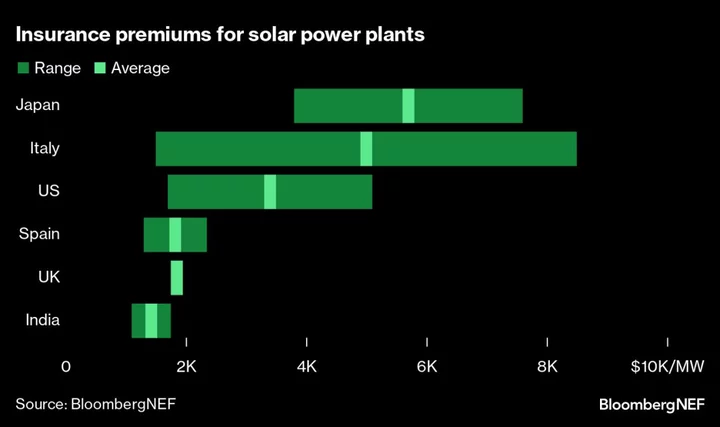There's nothing that will give you an existential crisis (or make you appreciate your life) more than taking a gander at space. From stars to planets to galaxies, there's a whole lot out there beyond our little floating rock — and a telescope is the best way to view the heavens.
Whether you're a beginner stargazer or a seasoned astronomer, there are a lot of telescopes and telescope accessories on the market. It's easy to drop a few thousand dollars on some of the higher-tech models, but that isn't always the case. To get some guidance on how telescopes work, what types of telescopes there are, and how to shop for one, we turned to the experts.
We chatted with Bart Fried, the Executive Vice President of the Amateur Astronomers Association in New York City, and founder and past president of the Antique Telescope Society. Fried is also a longtime member and former board member of the Custer Institute, as well as a member of the Astronomical Society of Long Island, and the Amateur Observers Society of New York, among other astronomy societies. We tapped Fried's 40 years of stargazing experience to learn everything you need to know before bringing home your own telescope.
How does a telescope work?
"What a telescope does, is it gathers light," Fried posited. "The diameter and the size of the aperture, the opening of the telescope, determines how much light it will gather. So, the bigger the telescope in aperture, the greater the light gathering, and that equates to being able to see fainter objects and things that are farther away as well."
Fried noted that a telescope doesn't actually magnify. Instead, it brings the light to a focal plane, which can then be looked at through a telescope's eyepiece. The focal length of the eyepiece determines the magnification that you get. A longer focal length will limit the field of view but increase the magnification, which is good for looking at planets and the moon. A shorter focal length does the opposite — it increases the field of view, which is ideal for looking at galaxies and other large deep space objects that are dimmer and further away.
SEE ALSO: The James Webb telescope's first stunning cosmic images are here"You can think of an eyepiece like a little mini microscope, Fried said. "You're looking through the eyepiece at this focal plane, and that's how you see the image."
The length of the telescope also affects your viewing experience. Longer telescopes with wider apertures will produce crisper images, but they'll be more expensive.
Things to consider before buying a telescope
Fried gave us a few rules every aspiring stargazer should consider before taking the plunge on a telescope:
Is your telescope going to be moved around, or will it live permanently in a room or protected outdoor location? Weight and portability matter when it comes to purchasing a telescope, and a telescope that's too big or heavy to carry probably won't get used much, unless you're planning to park it in a room, pointed out the window forever. For folks wanting to move their telescopes to the backyard and other outdoor locations, buying a telescope that you can realistically lift is essential.
Consider where you live and where you're going to use your telescope. If you live in an urban area with a lot of light pollution, you won't be able to see as much as you would be able to in a more rural area. City dwellers have no need for telescopes with very large light buckets, due to the light pollution they're dealing with. If you live in or near a city, you'll generally be better off with a small-to-medium-size refractor. Fried stressed that picking a telescope that's appropriate for your location will ensure you use it more.
What is your budget? Different kinds of mounts will run you different prices, and the more high-tech the telescope is, the pricier it will be. Planning out a budget will help you determine if you're in the market for a refractor telescope with a simple alt-azimuth mount, or if you're searching for high-tech telescopes with motored mounts and built-in GPS tracking.
What kinds of things are you interested in looking at? Different telescopes are better for looking at different things in the sky, so if you want to look at the planets regularly, you might opt for a different telescope than if you're just looking at stars. For example, Fried asserts that good quality small to medium-sized refractor telescopes are especially good at viewing the planets. Larger reflectors tend to be better for viewing deep-space objects.
Reflector telescope vs. refractor telescope
"Reflectors have a mirror, and the tube is open at the front and it gives you more aperture for your money," Fried explained. "But they are a little bit more difficult to use if you have a mount that tracks."
Refractors tend to be long and skinny, with the quintessential telescope shape, while reflectors tend to be wider and more cylindrical.
Here are the best features of a refractor telescope:
Beginner friendly
Generally more portable
Great images of planets
Refractors often require an additional part called a star diagonal, which allows you to see through the eyepiece without craning your neck upward. Star diagonals give you a 90-degree bend so that you can look down through the eyepiece, instead of looking up. Fried says that a "reasonably good quality star diagonal is worth investing in, even from the beginning."
And these are the best features of a reflector telescope:
More aperture for your money
Gathers a lot of light (which isn't always optimal depending on location)
Better on deep-space objects
There's also another category that is a sort of combination between a reflector and a refractor — Schmidt-Cassegrain telescopes (also called catadioptric or compound telescopes). "And in theory, they give you the best of both," said Fried.
Schmidt-Cassegrain telescopes often boast high-tech features like GPS, object location, and motorized mounts. These kinds of telescopes know what date and time it is, and are armed with a database of heavenly objects. To look at a particular star or planet, all you need to do is put it into the database and the telescope does the rest for you.
In theory, this sounds like a better option for beginners, but Fried warns that these kinds of telescopes can be difficult to use and take a lot of learning when compared to manual telescopes.
What kind of telescope eyepieces do you need?
If you want to get a higher power, you could technically opt for a longer telescope every time, but that's pretty impractical. Instead, to adjust your telescope's power, you can swap out your current eyepiece for eyepieces with different focal lengths.
Any telescope you get will likely come with some starter eyepieces, and those will definitely get you started at looking at the cosmos. If you're a more advanced stargazer, Fried says that upgrading your eyepiece will give you a wider field of view for the same magnification, as well as offer sharper images with higher contrast.
Fried recommends that beginners save room in their budgets for a few extra eyepieces, but especially recommends a mid-tier quality Zoom eyepiece. "Zoom eyepieces have a rotating barrel," Fried said "And it will change the focal length of the eyepiece." These types of eyepieces are basically like getting four or five different eyepieces in one, since they're adjustable.
Fried says these types of eyepieces are especially good for looking at double stars, among other things. "When I look at close double stars under low power, they look like single stars," he mentioned. "As I'm observing, I'll slowly start to rotate the barrel of my zoom, and it pulls you in closer and closer, because you're increasing the magnification. And all of a sudden that single star splits. Nothing's cooler than that."
Decent zoom eyepieces can range from $50 to hundreds of dollars, but Fried recommends the mid-range options.
What type of telescope mount should I get?
There are a handful of different telescope mount types, but the three we'll be talking about are the Alt-azimuth, Dobsonian, and equatorial. Here's the lowdown on each type:
Alt-azimuth mounts are the simplest type of mount. These types of mounts can move your telescope up and down, left and right, and are very easy to use manually. Alt-azimuth mounts don't track stars or planets, and are best when used with low to medium-power telescopes. They're fairly inexpensive.
Dobsonian mounts are a specialized type of alt-azimuth mount. These mounts are extremely lightweight because they're almost always made of plywood. They're decently inexpensive, stable, portable, and easy to use. The bottom of a Dobsonian mount is essentially a lazy Susan, and is typically used with reflector telescopes.
For slightly more serious observing, an equatorial mount is a good choice. Equatorial mounts line up with the pole star and can track the motion of whatever you're looking at. These mounts aren't necessarily bad for beginners, but they do take a little bit of practice to master. Non-motorized equatorial mounts feature a slow-motion handle that keeps whatever you're looking at centered in the field of view — which helps when used under high power. If you spend a bit more money, you can also get a motorized equatorial mount, which tracks whatever you're looking at automatically.
Advice for new stargazers
"Every beginner should join an astronomy club, because you can try other people's telescopes for free," Fried urged. "You can try everybody's telescope, decide which one you like, and learn a little bit about [astronomy]."
Astronomy can be an expensive hobby to get into, so doing your research via a club can help you make a smarter purchase.
In terms of telescope type recommendations, Fried recommends a six or eight-inch reflector or a four or six-inch refractor. Of course, these recommendations may change depending on your location, the desired portability, and your desired budget.
When asked for brand recommendations, Fried let us know that buying from a retailer who will service your telescope if you run into any problems is more important than any specific brand. "I strongly believe that a beginning astronomer should buy from a reasonably local dealer," he said.
If you have an issue with your telescope as a beginner, Fried explained that you're much more likely to stick with astronomy if you can take it to your local dealer for any repairs. If the dealer you bought it from is far away and you need to pack up the telescope and ship it back to get it returned, you might get discouraged and give up on the telescope altogether. Before buying, look for a telescope that has a good warranty, and try to buy from a retailer that has locations in your area in case you need your telescope serviced.
Now that you have the knowledge of the different types of telescopes, here are some recommendations for reflector telescopes, refractor telescopes, and more:









